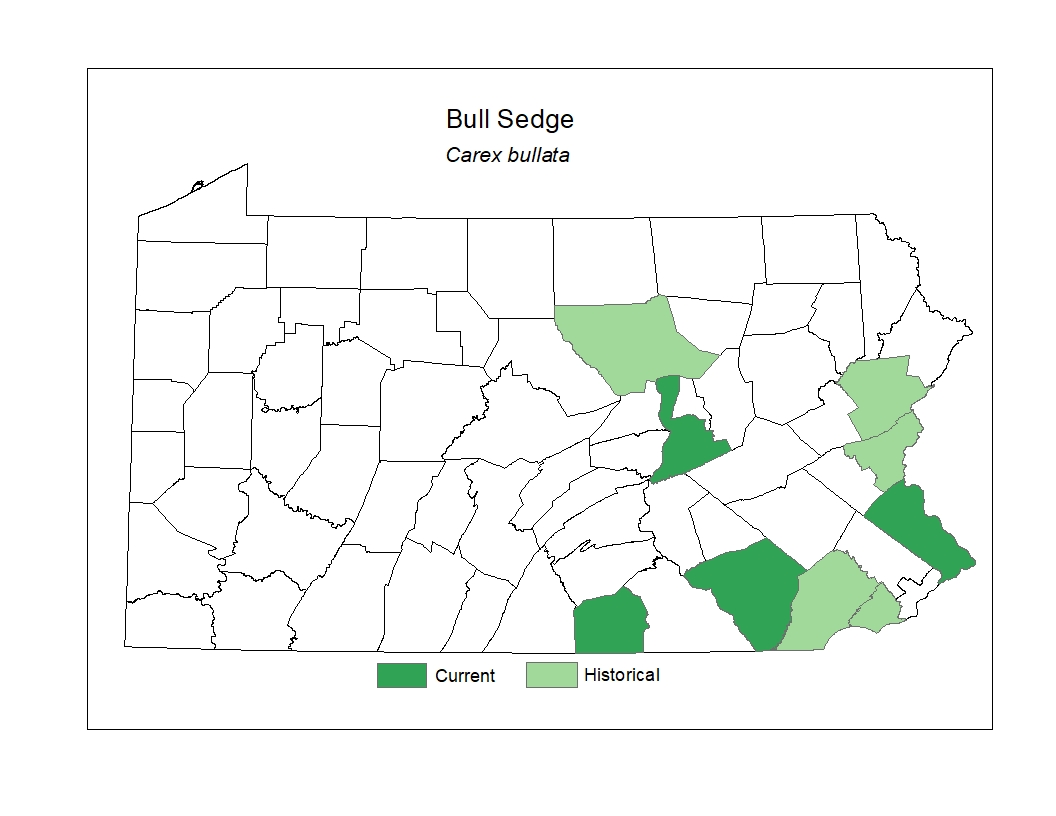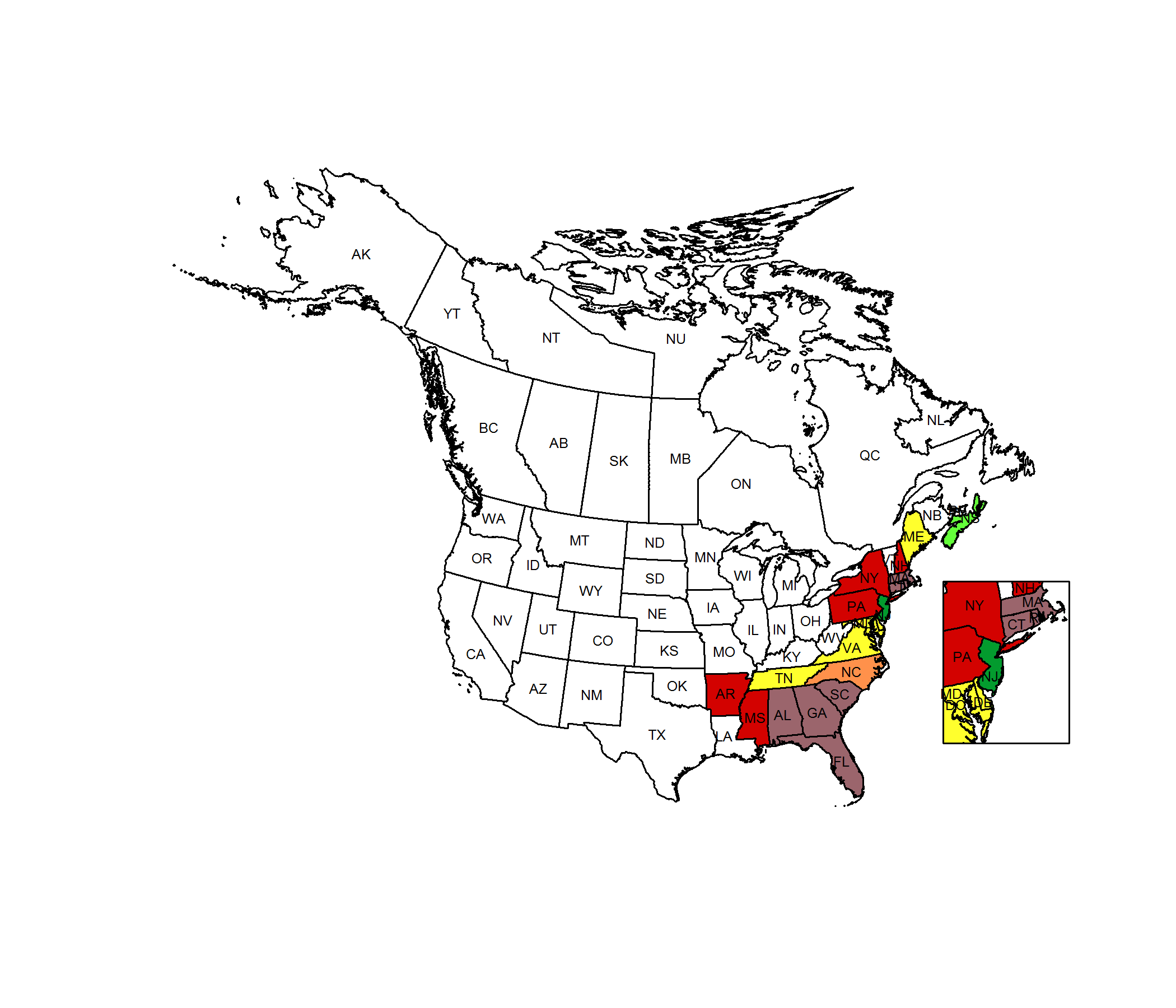 Species Factsheets
Species Factsheets
Carex bullata
Bull Sedge
State Status: Pennsylvania Endangered (PE)
PBS Status: Pennsylvania Endangered (PE)
Federal Status:
Global Rank: G5
![]() rank interpretation
rank interpretation
State Rank: S1
Did You Know?
The name for this species comes from the Latin word "bullatas" meaning inflated - this refers to the inflated perigynia of the spike of the plant.
Description
Bull sedge (Carex bullata) is a grass-like plant that forms colonies. The aerial stems are triangular in cross-section, purple-tinged near the base, and stand three to ten decimeters tall. The leaves have linear, elongated blades that are smooth, light green, and about 2-4mm wide. The flowers are unisexual, grouped in one to three male spikes at the top of the stem and one or two bur-like female spikes below. The female spike consist of individual inflated sac-like structures, or perigynia, which are roughly 6-10mm long, arranged around the spike into eight to twelve vertical rows, and contain the triangular fruit.
Rank Justification
Critically imperiled in the nation or state because of extreme rarity (often 5 or fewer occurrences) or because of some factor(s) such as very steep declines making it especially vulnerable to extirpation from the state.
PABS
The PA Biological Survey (PABS) considers bull sedge to be a species of special concern, based on the very few occurrences that have been recently confirmed and its wetland habitat. It has a PA legal rarity status and a PABS suggested rarity status of Endangered. Fewer than five populations are currently known from the state.
Habitat
It grows in swamps, seepages, boggy wetlands and along streamlets.
Survey Dates
Flowers, fruits May - August
Distribution
In Pennsylvania, this species occurs on a western border of its range and has been documented historically in a few eastern counties.

Management
The viability of populations of bull sedge and its habitat may be enhanced by creating buffers around wetlands, controlling invasive species, and protecting the natural hydrology surrounding wetlands.
Conservation Status Map


NatureServe. 2017. NatureServe Explorer: An online encyclopedia of life [web application]. Version 7.1. NatureServe, Arlington, Virginia. Available https://explorer.natureserve.org.
https://www.acris.nynhp.org/guide.php?id=9462
- NatureServe. 2018. NatureServe Explorer: An online encyclopedia of life [web application]. Version 7.1. NatureServe, Arlington, Virginia. Available at https://www.natureserve.org/explorer
- Pennsylvania Natural Heritage Program. 2018.
- Rhoads, A.F. and W.M. Klein, Jr. 1993. The Vascular Flora of Pennsylvania. American Philosophical Society, Philadelphia, Pennsylvania. Rhoads, A.F. and T.A. Block.
- 2007. The Plants of Pennsylvania: An Illustrated Manual. 2nd edition. University of Pennsylvania Press, Philadelphia, Pennsylvania.







